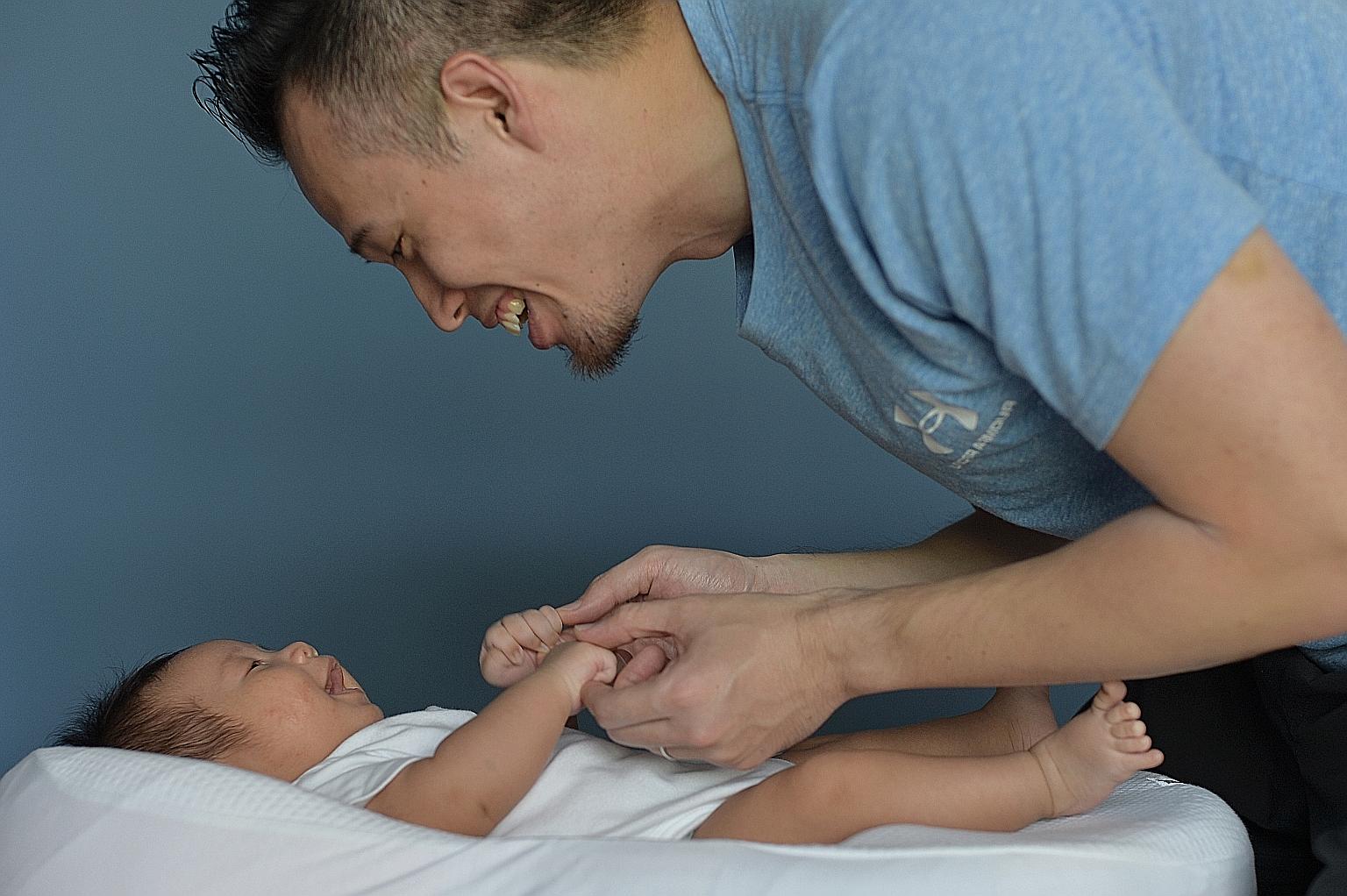Paternity, maternity leave: Remove wide disparity, says activist
Address burden of caregiving on mums to boost fertility rate, she says
Sign up now: Get ST's newsletters delivered to your inbox

Currently, fathers get two weeks' paid paternity leave, while mothers get four months. This reinforces the idea that raising children is primarily women's work, said women's rights activist Corinna Lim.
ST FILE PHOTO
Follow topic:
Give fathers the same amount of paternity leave as mothers, and give men an equal right to claim maintenance from their wives to entrench gender equality and boost the "dangerously low" fertility rate, said women's rights activist Corinna Lim.
Speaking as the eighth S R Nathan Fellow for the Study of Singapore at the Institute of Policy Studies (IPS)-Nathan Lecture yesterday, Ms Lim said the wide disparity between maternity and paternity leave reinforces the idea that raising children is primarily women's work.
Ms Lim, the Association of Women for Action and Research (Aware) executive director, added that the disparity also goes against gender equality and affects mothers' career prospects.
Currently, fathers get two weeks' paid paternity leave, while mothers get four months. She proposed a cap of six months' paid leave for both parents and the couple could divide it 50-50 or with the men getting two months and mums, four months of leave.
She said in the hour-long lecture, streamed from the IPS Facebook page: "The issues of women's workforce participation and Singapore's low fertility rates boil down to one thing: the expectation that women, who are now educated and have careers, will continue to bear the brunt of the caregiving burden, as they did in the past.
"This expectation sets up a situation where women have to choose between their careers and their children."
She said it is key to address the burden of caregiving on mothers, as pro-natal incentives, such as family leave and monetary carrots like baby bonus, still did not do so.
She pointed out that the number of women in the workforce "goes downhill all the way" from the age of 30, when many women become mothers and stop work. Many do not return to the labour market when their children are older as they may have to care for their elderly parents, among other things.
To improve gender equality, Ms Lim suggested giving men the same rights as women to apply for maintenance.
Currently, husbands or former husbands can claim maintenance from the women only if they are incapacitated by illness or disability during their marriage and they cannot work to support themselves. But women have an "unfettered right" to claim maintenance from their husbands.
She said: "In line with the idea that fathers should be equal parents or sometimes even stay-at-home parents, we should also amend the Women's Charter to equalise men's rights to seek maintenance from their wives."
In her second of three lectures yesterday, Ms Lim noted that the Government's annual spending to promote marriage and parenthood rose from $500 million in 2001 to $2.5 billion in 2017, yet the total fertility rate fell to a "dangerously low" figure of 1.1 last year.
Quoting figures first cited by Senior Minister Teo Chee Hean in 2013, which had a total fertility rate of 1.2 then, there will be about one third as many Singaporeans as there are today in just two generations, Ms Lim said.
She said countries like Sweden, Norway and Finland have achieved higher fertility rates, competitive economies and the ability of women to have both careers and children through laws and policies that reflect gender equality, such as equal parenting leave, and robust infrastructure to support caregiving.
Turning from babies to the elderly, Ms Lim said current policies and infrastructure are inadequate to support the needs of a rapidly ageing population and caregivers.
She urged the Government to review its approach to long-term care, as investments in the area have been "very conservative".

